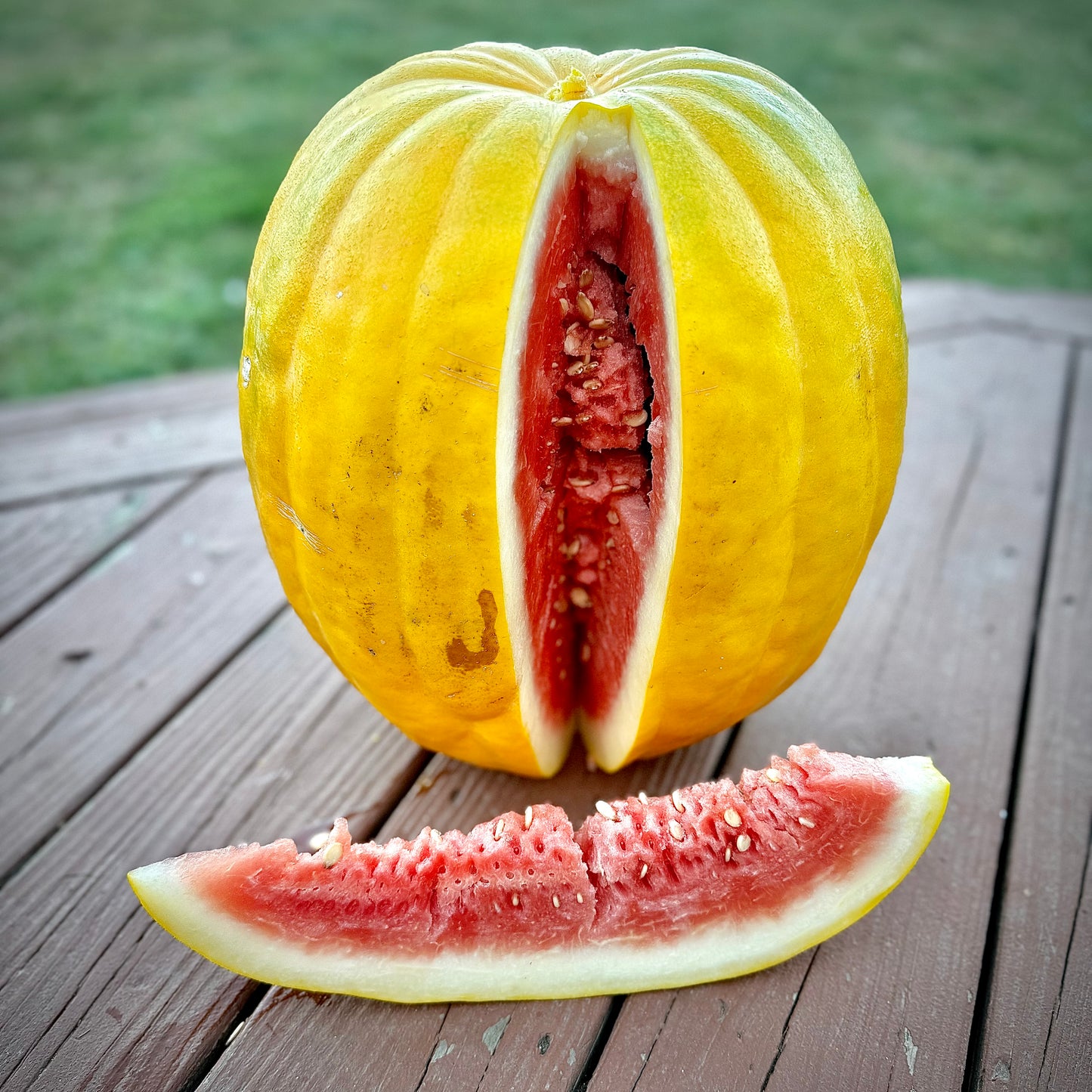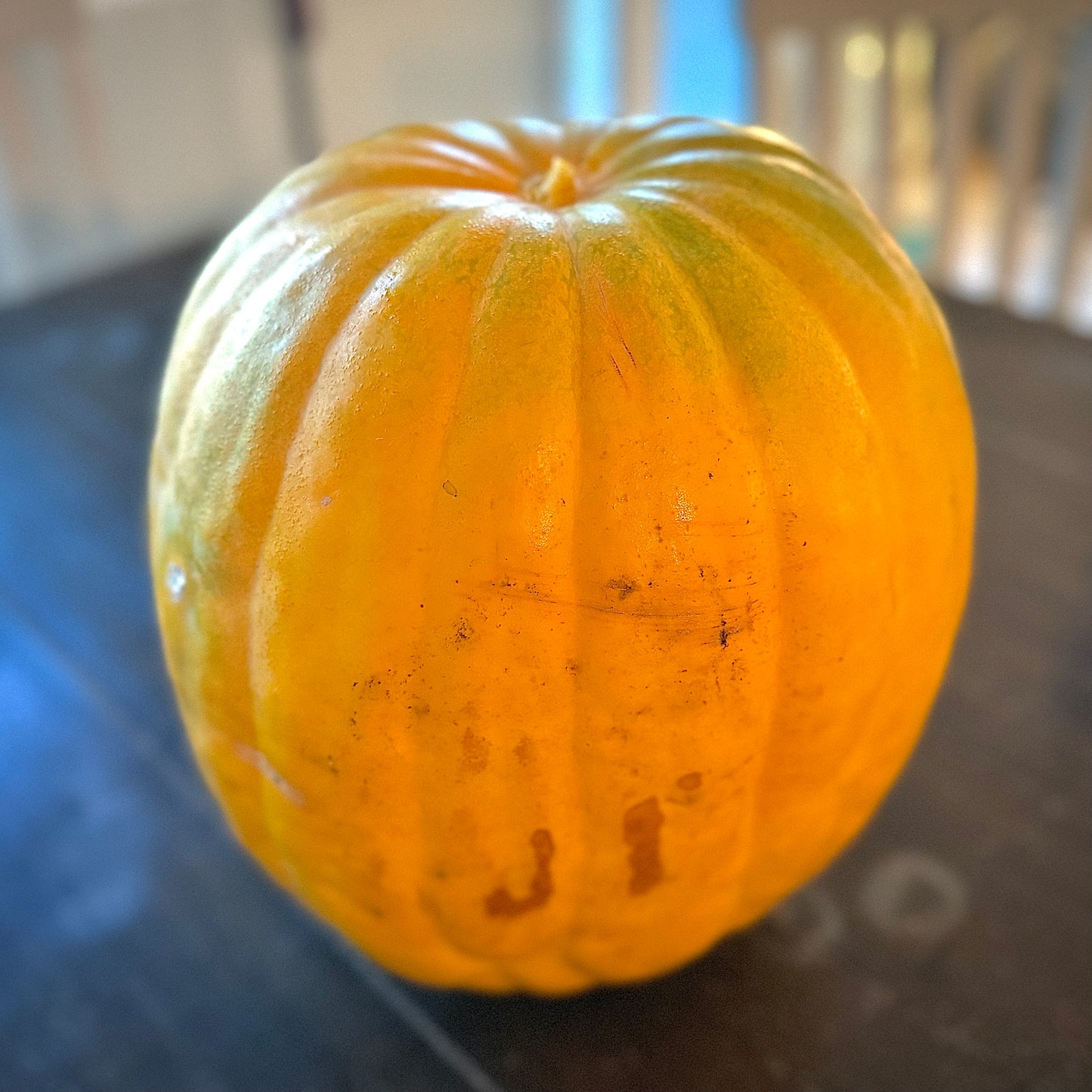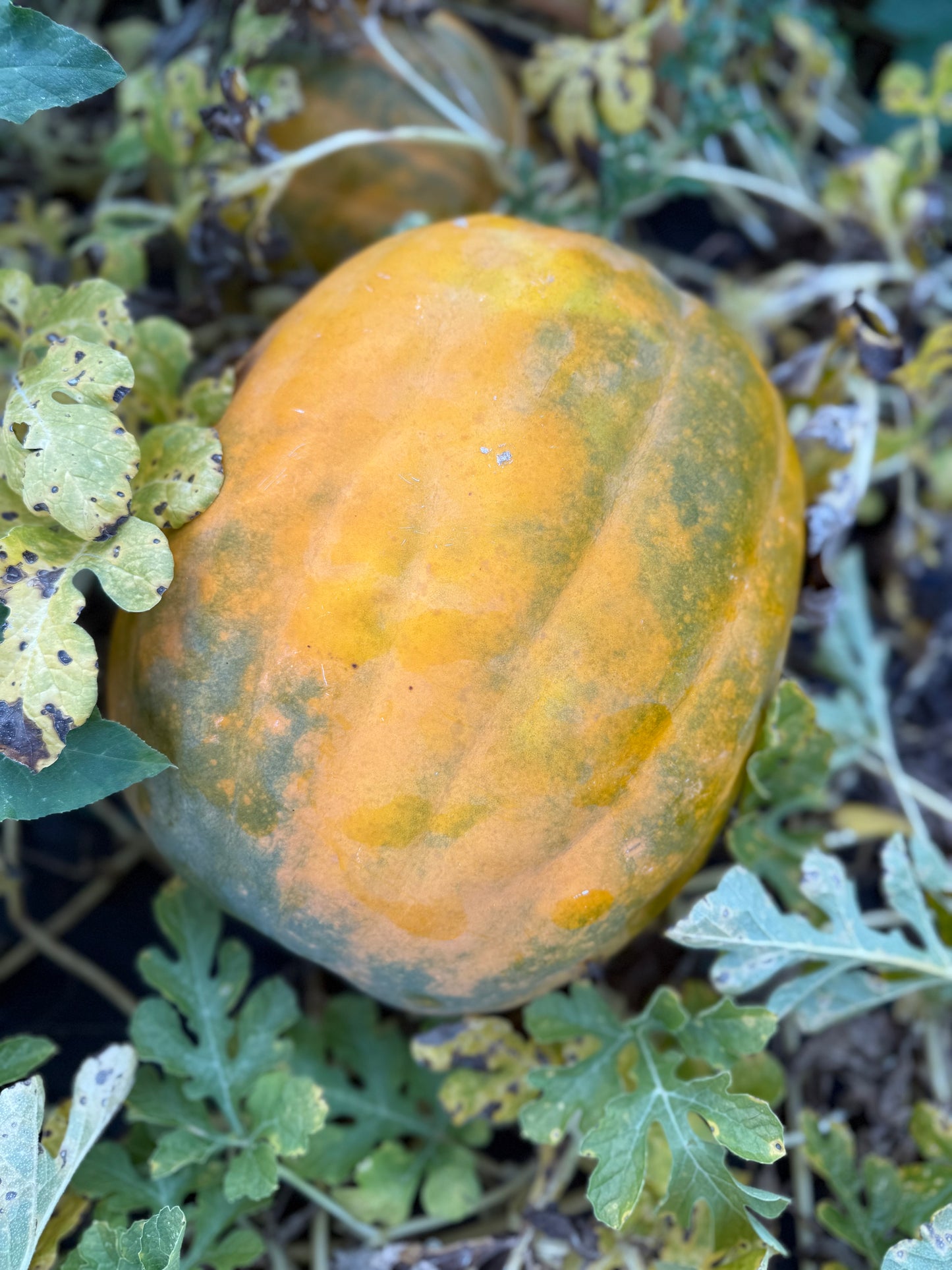Watermelon - Royal Golden
Watermelon - Royal Golden
4.78 / 5.0
(9) 9 total reviews
Couldn't load pickup availability
Minimum Seed Count: 10
The Royal Golden Watermelon is a striking variety that stands out even before it’s cut open. Its Pumpkin like rind ripens to a brilliant golden-yellow, a bold contrast to the more common green-striped melons. The skin is smooth and eye-catching, almost glowing in the sunlight. Inside, the flesh is a deep, vibrant pink-red, juicy and glistening with sugar sweet flesh (the sweetest we have had!). The fruit is typically round to slightly oblong, averaging medium to large in size, and often dotted with small black seeds. When sliced open, the bright yellow rind against the rich red flesh creates a regal two-tone look that makes it as beautiful as it is delicious.
🌱 Planting Guide:
1️⃣ When to Plant
Plant after the last frost when soil temperature is at least 70 °F (21 °C).
In cooler climates, you can start seeds indoors 3–4 weeks before the last frost and transplant when nights stay warm.
2️⃣ Soil Preparation
Prefers loose, well‑drained, fertile soil with a pH between 6.0–6.8.
Mix in compost or well‑rotted manure before planting to boost nutrients.
3️⃣ Seed Sowing
Direct Sow: Plant seeds ½–1 inch deep in small hills.
Spacing:
Hills: 3–4 seeds per hill, spaced 3–4 ft apart.
Thin to 2 strongest plants once seedlings emerge.
Row Planting: Space plants 3 ft apart in rows 5–6 ft apart.
4️⃣ Watering & Care
Keep soil consistently moist, especially during flowering and fruiting.
Water at the base of the plant, not on the leaves, to prevent disease.
Mulch with straw or black plastic to retain moisture and warm the soil.
5️⃣ Fertilizing
Start with a balanced fertilizer (e.g., 10‑10‑10).
Once vines start running, switch to phosphorus and potassium‑rich fertilizer to support flowers and fruit.
6️⃣ Pollination
Bees are the main pollinators. If bee activity is low, hand pollinate by brushing pollen from male flowers to female flowers (those with a tiny melon at the base).
7️⃣ Harvesting
Ready about 85-100 days after planting.
Signs of ripeness:
Tendril nearest the fruit turns brown and dries.
Rind becomes slightly dull and produces a deep, hollow thump when tapped.
8️⃣ Extra Tips
Rotate melon crops each year to prevent soil-borne diseases.
Keep ripening fruit on straw or cardboard to prevent rot.
Share







I think the watermelon is beautiful. I can’t wait to plant it. And enjoy
Haven't planted yet,its November.
Planting them in spring.
Hope they are great.
Shipping was less than steller wait-wise and communication sparse, but the seeds themselves have proven very viable and sprouted rapidly.
I’m excited to plant them this spring!
Seeds arrived with no damages








